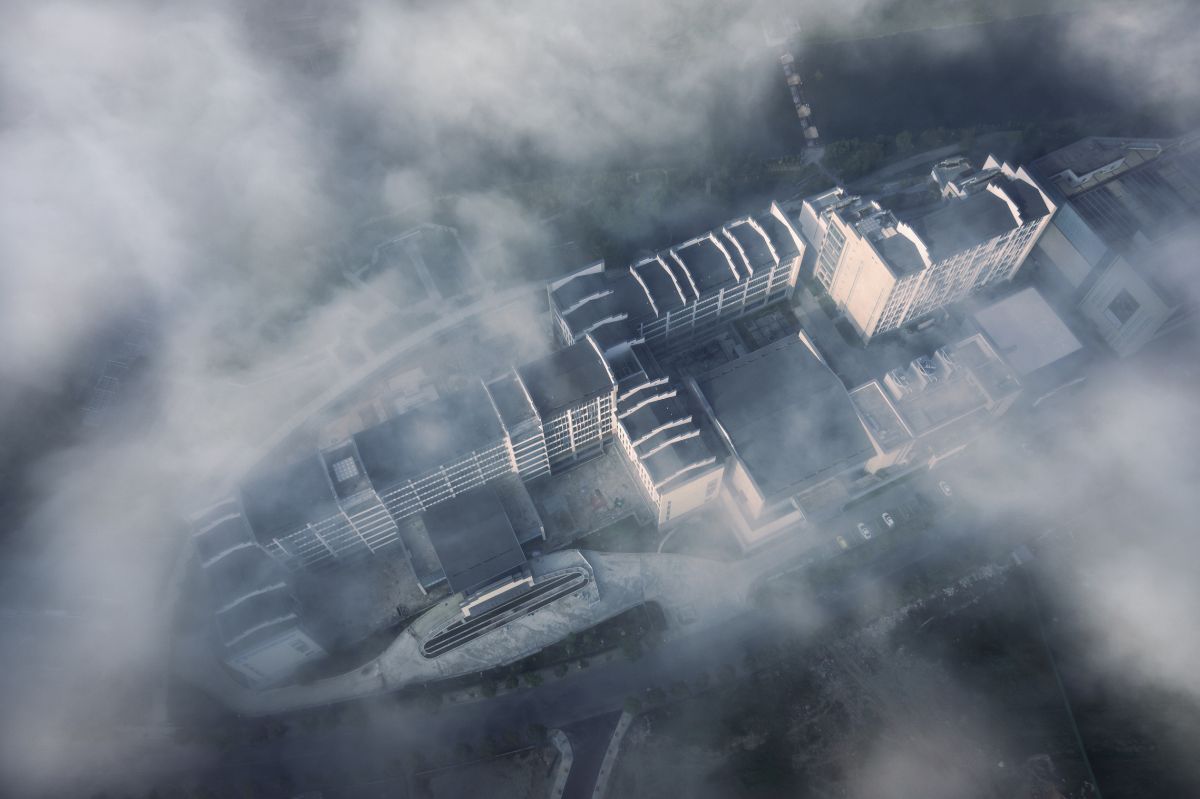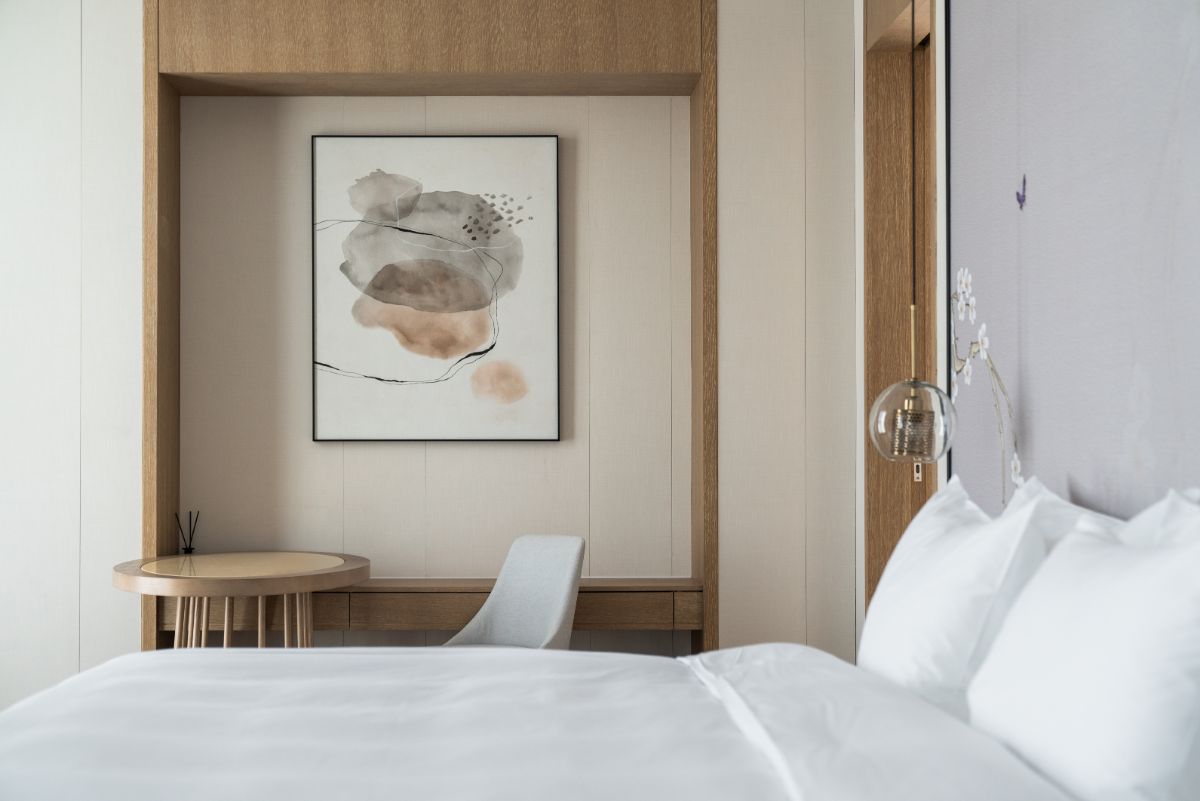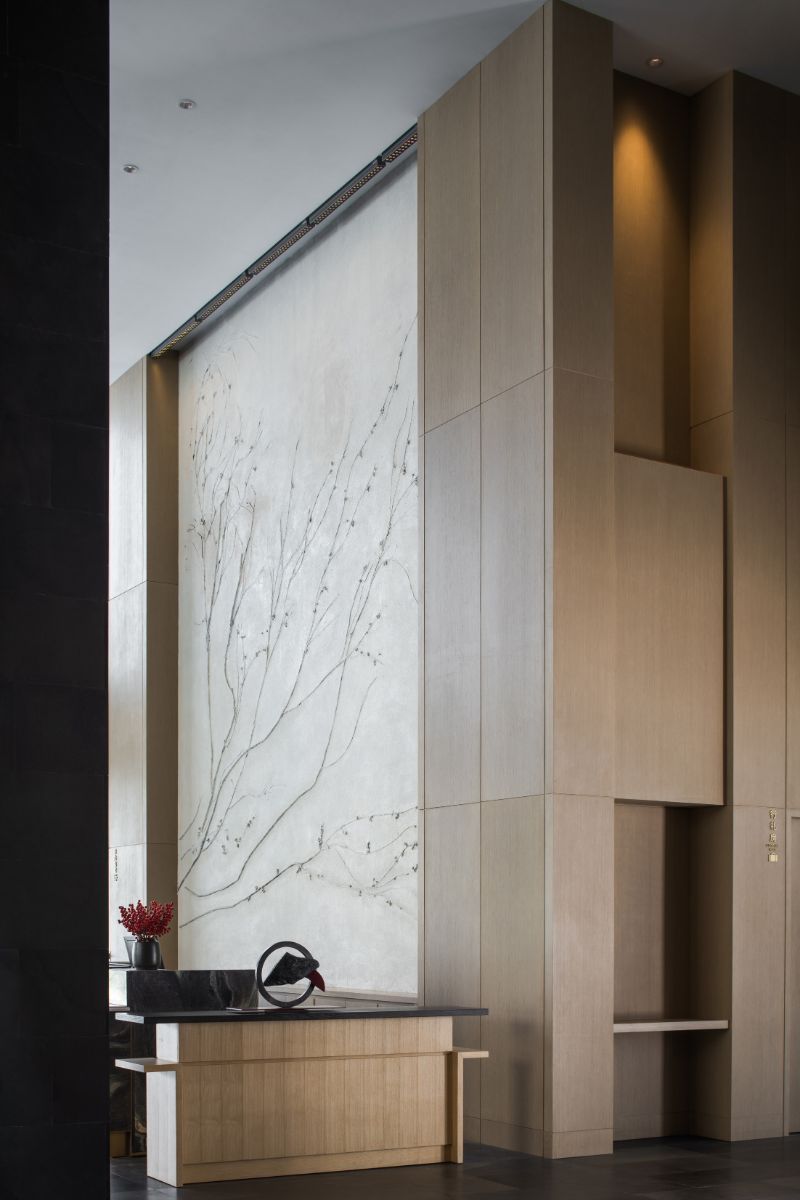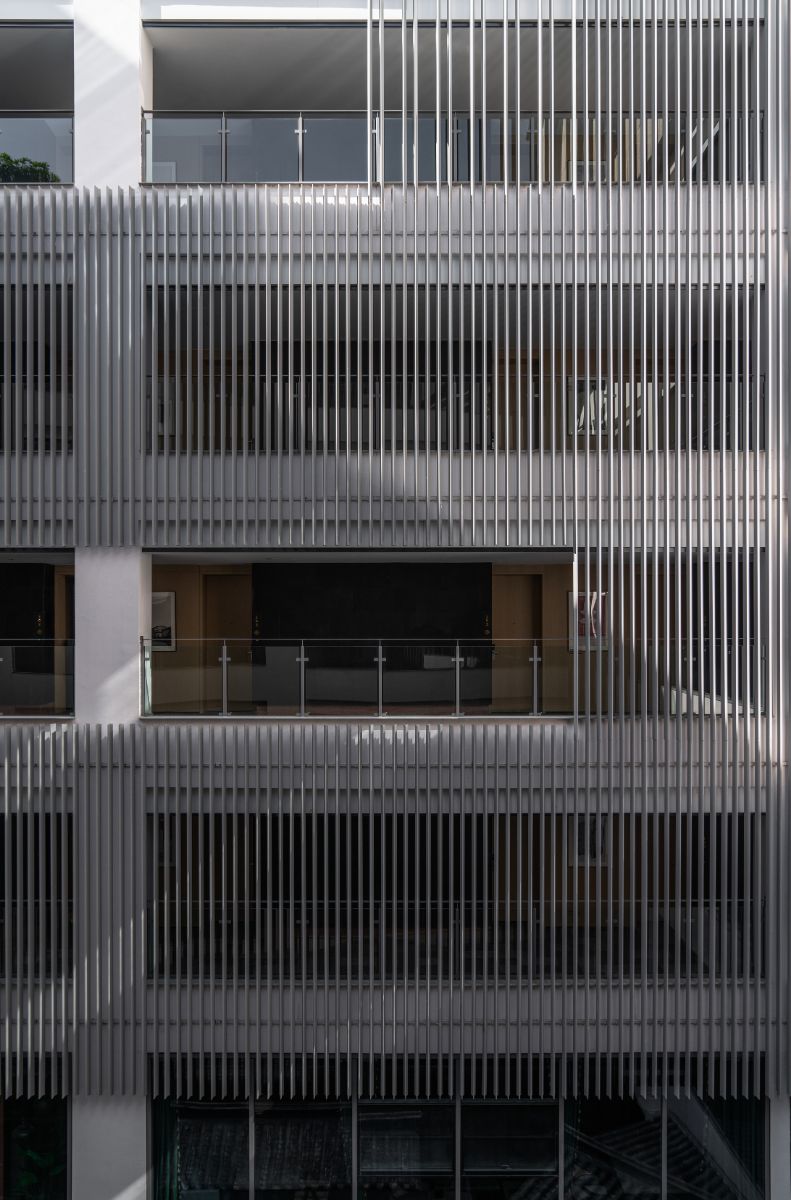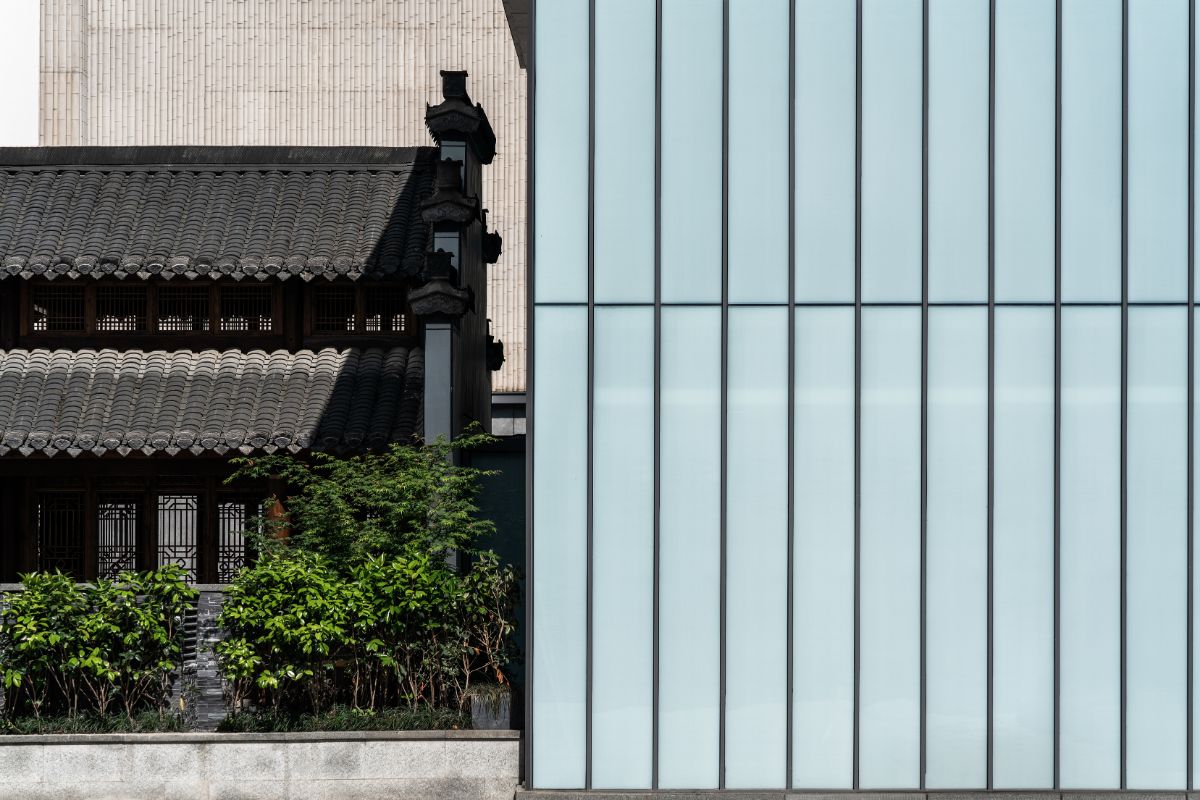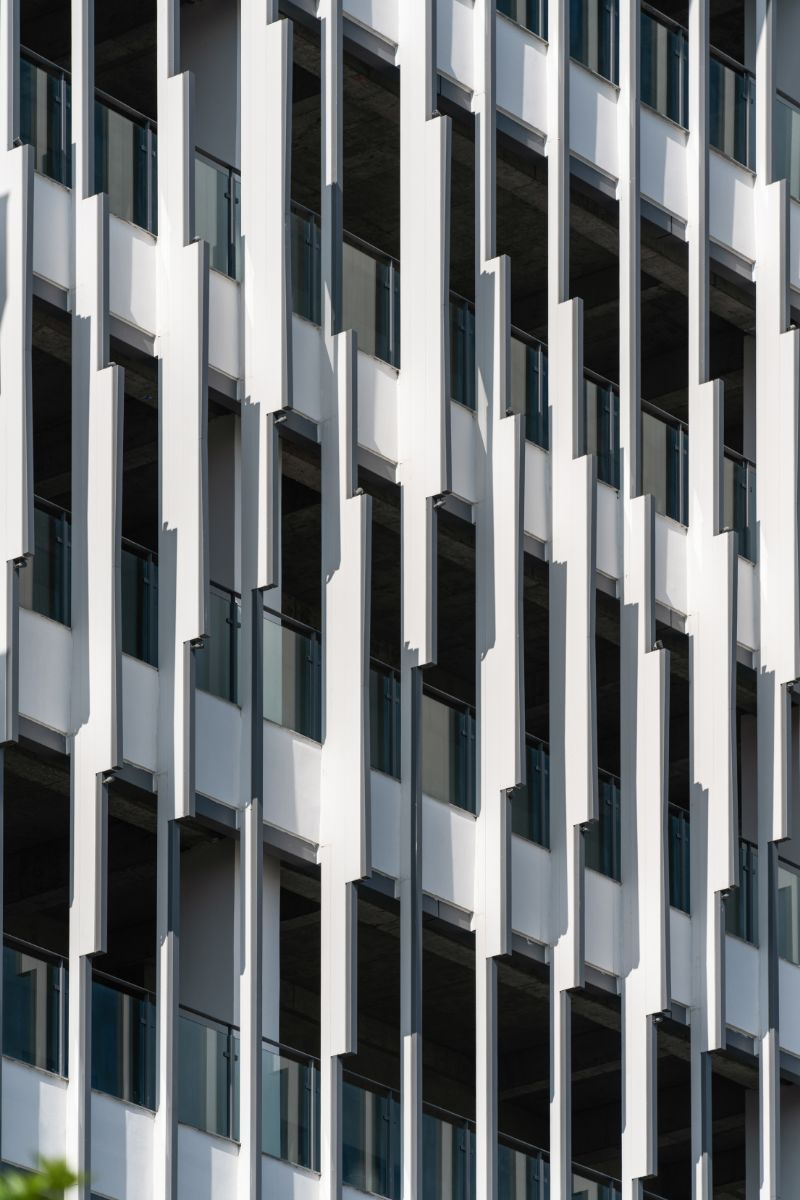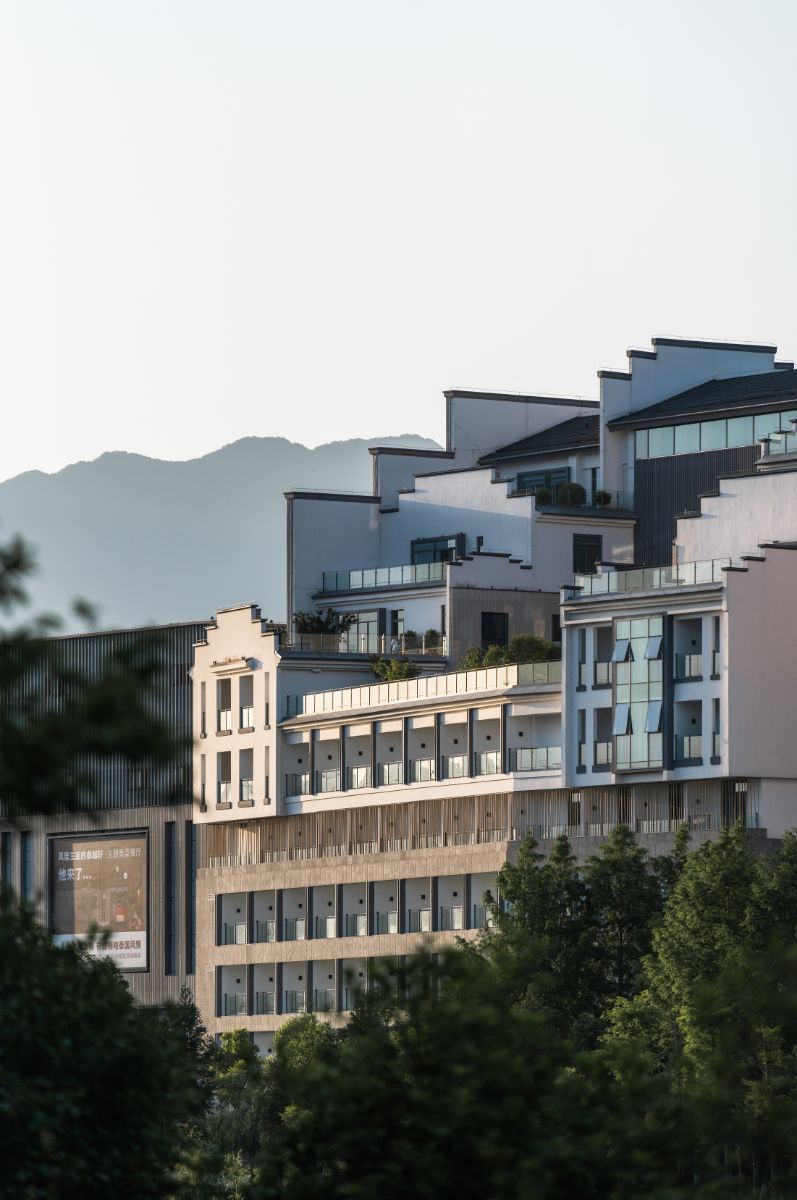Design of Hotel Space

Projet
Introduction
An Hui-style Castle That Grows Naturally In The Sky
Yixian County was founded in the 26th year of Qin Shihuang (221 years ago). It is one of the birthplaces of "Anhui Culture". As a world cultural heritage site, Huizhou culture and Huizhou merchants have created ancient villages with typical local traditional characteristics. The natural scenery of the ancient village, which seems to have emerged from the Chinese ink painting, has attracted countless painters, photographers and tourists to come for their vacation. Here, there is no need to choose a special shooting angle. When the drone rises to a height of 100 meters, the shutter is pressed to retain a Chinese painting with a leisurely mood.
WYNDHAM DONGRONG RESORT is located in the south of Yixian County, next to Zhangshui River. It is connected to the Hongcun Tourist Attraction in the east and Xidi Tourist Attraction in the south. There is no doubt that the location of the hotel has laid the cornerstone for subsequent operations. After in-depth analysis of the location and regional culture of the hotel, the designers put forward an integrated architectural, landscape and interior design solution that integrates localization and experience. They also put forward from the perspective of hotel business operations: "Hotels are not only on the way to travel the place of residence can be a destination for travel."
The architectural planning of the project draws on the design processing techniques of the spatial mechanism in the layout of traditional Hui-style villages. That is, through the creation of a series of enclosed courtyards, small water systems and tortuous corridors, an exclusive spatial mechanism is formed in accordance with local conditions, and the planning idea of natural growth and harmony between man and nature is formed.
"Yixian Green" is a kind of marble unique to Yixian, with solid and fine stone quality. During the Ming and Qing dynasties, Xidi Mingju buildings used this kind of stone in large quantities. The designer used this unique material on the outer wall of the hotel building below three floors, so that the building forms a visual sinking treatment, and it fits the surrounding natural environment more closely. Starting from the fifth floor, we will retreat and restore the Hui-style villages with the concept of "Huanghui Pavilion". The horse head walls are layered on top of each other to form an array, reproducing the keynote of the micro-style with modern techniques.
After field trips to ancient villages such as Hongcun Xidi, the designers realized that after hundreds of years of wind and rain, the real ancient villages have become full of traces of time and become simple and heavy. The new and the old, the present and the history, should blend more naturally instead of copying the tradition. Therefore, the exterior wall of the building did not directly adopt a large-area white wall. The design team used bamboo to mold and proof, and then prefabricated a bamboo joint board with cement fiber and reinforced concrete. The sense of hierarchy is interesting, and it also has a thermal insulation effect on the building.
Between the hotel lobby and the guest rooms, a traditional Huizhou building is revived here as a corridor connecting the new and the old, the present and the history. The pavilions, wooden windows, and tiles can form a sharp contrast with the glass curtain walls of modern buildings. The curtain wall is made of white glazed glass, which not only controls the projection and transmission of light inside and outside the building, but also influences the stay and extension of people's sight lines inside and outside the building. The lights are on at night, the building is shrouded in dim and gentle light, and the sense of lightness and atmosphere of the holiday is also ready to come out.
While creating the "Huang Hui Pavilion" on the river side of the hotel, the designer also extracted the "horse head wall" elements from the language of Hui architecture along the street to make art installations. The lines are simplified to form an elegant and undulating building facade. People and vehicles can feel the texture changes like the roof of a village in the process of traveling.
The lifestyle that young people yearn for may be hidden in the close relationship between man and nature. The resort hotel provides an opportunity for contemporary people to go back to nature and inside. Designers who are constantly exploring the lifestyle of the future have found the best fit of inspiration between contemporary and traditional with a hotel in a small Huizhou city like a Chinese painting. It adds a best destination for travelers who yearn for natural mountain dwellings and architectural culture.

Design by Luke Han - Hope Design
Mr. Luke Han has been engaged in the architecture and interior design industry for more than ten years, and his completed design projects span multiple industry sectors. Such as: architecture, interior, hotel, tourism commercial space, restaurant, etc. He is not only good at large-scale external space construction of the project, but also good at internal space creation, which also makes his understanding of space design more diverse and comprehensive. He believes that the goal of commercial space design is to convey a lifestyle for consumers through design, and to interpret brand culture and genes through design, and to create a more efficient workspace for users through a comprehensive understanding of operational functions. environment.
Hope Design is a spatial design company with multiple creative thinking, focusing on catering brands and commercial space building. We combine the advantages and characteristics of outstanding teams in various fields, to provide professional and effective of Comprehensive solution for different brands requirements. In the design process, We keep on researching people's sensory experience and needs, constantly exploring the consumption patterns and lifestyles of future young people. We build a unique customer experience with diversified cross-border thinking and artistic aesthetics, and to create maximum value for the brand.

